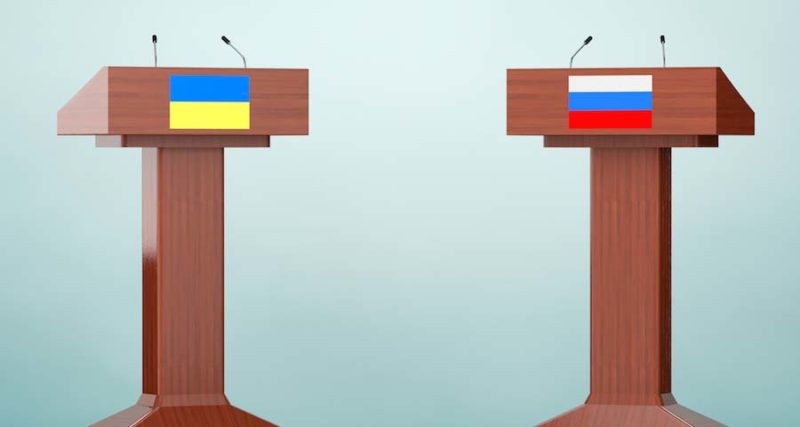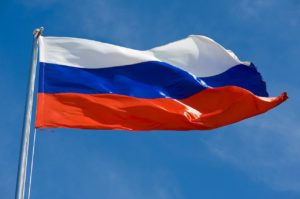How Similar Are These Two Slavic Languages?
It’s a common question from those not familiar with Slavic languages. On the outside, both Russian and Ukrainian sound very similar. It’s not a new notion, countries with similar languages in proximity, influencing each other. In fact, when you look at other countries like the U.S. and Canada or Germany and Austria, or even the many different nations scattered throughout Latin America, you see that these neighbors have very similar languages or that they speak a dialect of the same language. So what about Ukrainian and Russian?
Maybe you’re interested in Slavic languages, or perhaps, more specifically, you’re interested in starting a Russian language program. Either way, knowing how similar the languages of these regions can be is very helpful if you’re studying or thinking about studying Russian. In short, it pays to know how much of it will translate to Ukrainian and the other countries from the former Soviet Block. Either way, before you begin work in the best language learning program, you should know what, if anything, separates these two languages.
A Shared History
Both Russian and Ukrainian have similar origins stories. Both languages stem from the Indo-European family, specifically, the Eastern Slavic stem. The languages are believed to have splintered around the 12th – 13th century with Ukrainian being more influenced by Polish and Slovak languages while Russian’s primary influence was the Old Church Slavonic.
Peter the Great also helped further distance Russian from Ukrainian with his attempts to Westernize the Russian language. Simultaneously, Ukrainian was banned from the Russian Empire, specifically, what is now the Eastern half of modern-day Ukraine.
And yet, the influence of Russian on the Ukrainian language returned when the Soviets spread Russian throughout the country as a result of the Soviet occupation. Specifically, Russian became the primary language taught in schools throughout the Soviet Union as a result of the Russian Orthographic Reform of 1917 – 1918. This helped create some of the current similarities while also explaining the prevalence of Russian speakers in Ukraine today.
Despite their similar origins, there have been enough factors to push these languages into their distinct branches today, including time, culture, and politics.
Alphabets
While it’s true that Ukrainian and Russian share a mostly similar alphabet, that is hardly an argument for them being the same language. If you compare English to either German or Dutch, you can see that they are very similar as well. This does not mean that an English speaker can read Dutch or German effortlessly. The languages are easier in some aspects, but quite harder in others. And there are enough differences to notice. The same is true of the Ukranian and Russian Alphabets.
These are the four vital differences between the Russian and Ukranian alphabet:
- Ukrainian alphabet has “Ґ ґ,” “Є є,” “Ї ї,” and “І і.” The Russian alphabet lacks these letters.
- The Russian alphabet has “ы,” “Ё ё,” and “ъ.” And in the Ukranian alphabet, these do not exist.
Now, the first reaction might be to say that this is only seven differences and that’s so many. However, consider the Dutch alphabet in comparison to the English alphabet. They are the exact same 26 letters. The only thing that’s different is how we pronounce them.
And for an even better comparison, look at how different a language like Italian is from English, for instance. Despite there only being a five letter difference in their alphabets, you wouldn’t state that English and Italian are basically the same based on that observation.
Vocabularies
These two languages only share about 60 percent of the same vocabulary. In fact, Ukranian is closer to Belarusian than it is to Russia concerning vocabulary. In other words, there is a greater difference between Russian and Ukrainian in terms of vocabulary than there is between most of the Romance languages.
While communicating is not impossible between any of these languages, a great deal of the mutual intelligibility depends on where you’re located in the country. A Ukranian who lives close to Russia would understand Russian easier than someone living in the western area of Ukraine. The closer you are to the source of another language, the more influence it’ll have on your own language.
Similarly, an Italian living in Northern Italy has an easier time understanding a French speaker than someone from the south of Italy. This is because some dialects in Northern Italy have had previous exposure to French making it easier to comprehend by the people living in those areas.
Similarities in Writing
Interestingly enough, because both Russian and Ukranian share the same alphabet, with only a few minor differences, the written form of the language is mutually intelligible. That is to say that a Russian stranger with no exposure to Ukranian could pick up a text, read it, and mostly understand it. Linguistically speaking, they share about 80 percent similarity in their writing.
Differences in Russian and Ukrainian Grammar
Even though the writing between the two languages is similar, there are still noticeable differences in some grammatical concepts.
- Ukrainian uses -mo ending for first-person plurals.
- Ukrainian uses ‘ as an alternative to the hard sign.
Differences in Pronunciation
Russian and Ukrainian are different in pronunciation. To non-native speakers and for those not familiar with the language, they can sound the same. However, they are only roughly similar, and enough to be noticeable by people familiar with the languages.
- Ukranian has more soft consonants.
- Ukrainian pronounces the “o” as “o” whereas Russians pronounce it typically as an “a.”
- The Ukrainian “И” and “Е” have different pronunciations compared to their Russian equivalents, “Ы” and “Э”.
- The Russian language doesn’t have a sound for “Г г.”
- Ukrainian is a mostly phonetic language. Its pronunciation tends to follow the spelling.
It’s fair to say that the similarity between these languages concerning pronunciation are comparable to the similarities between Italian, Spanish, and Portuguese. Some aspects overlap, but there are enough distinct differences.
Understanding the Difference
The Ukrainian and Russian languages are similar in the way Romance languages are. People from Rome can arrive in Paris and communicate with some difficulty just like someone from Moscow would when talking to someone in Kiev. This changes depending upon how far away travelers are from the major cultural centers as various dialects and accents interfere with understanding. And it’s important to note that having training in either language helps a lot, too.
Even though these two languages are similar, Ukranian has a stronger connection to Polish than it does with Russian, linguistically speaking. However, that doesn’t mean to say that Ukrainians don’t understand or can’t speak Russian. As Ukraine is a former Soviet Territory, many Ukrainians were brought up speaking or learning Russian. Today, roughly 60 percent of Ukraine can speak the language.
Learning Russian won’t mean that you can speak flawless Ukrainian. However, it similarity implies that once you discover how to learn Russian grammar in your foreign language program, you’ll have an easier time reading in Ukrainian, and with practice and study, you’ll be able to speak in Ukrainian too.







